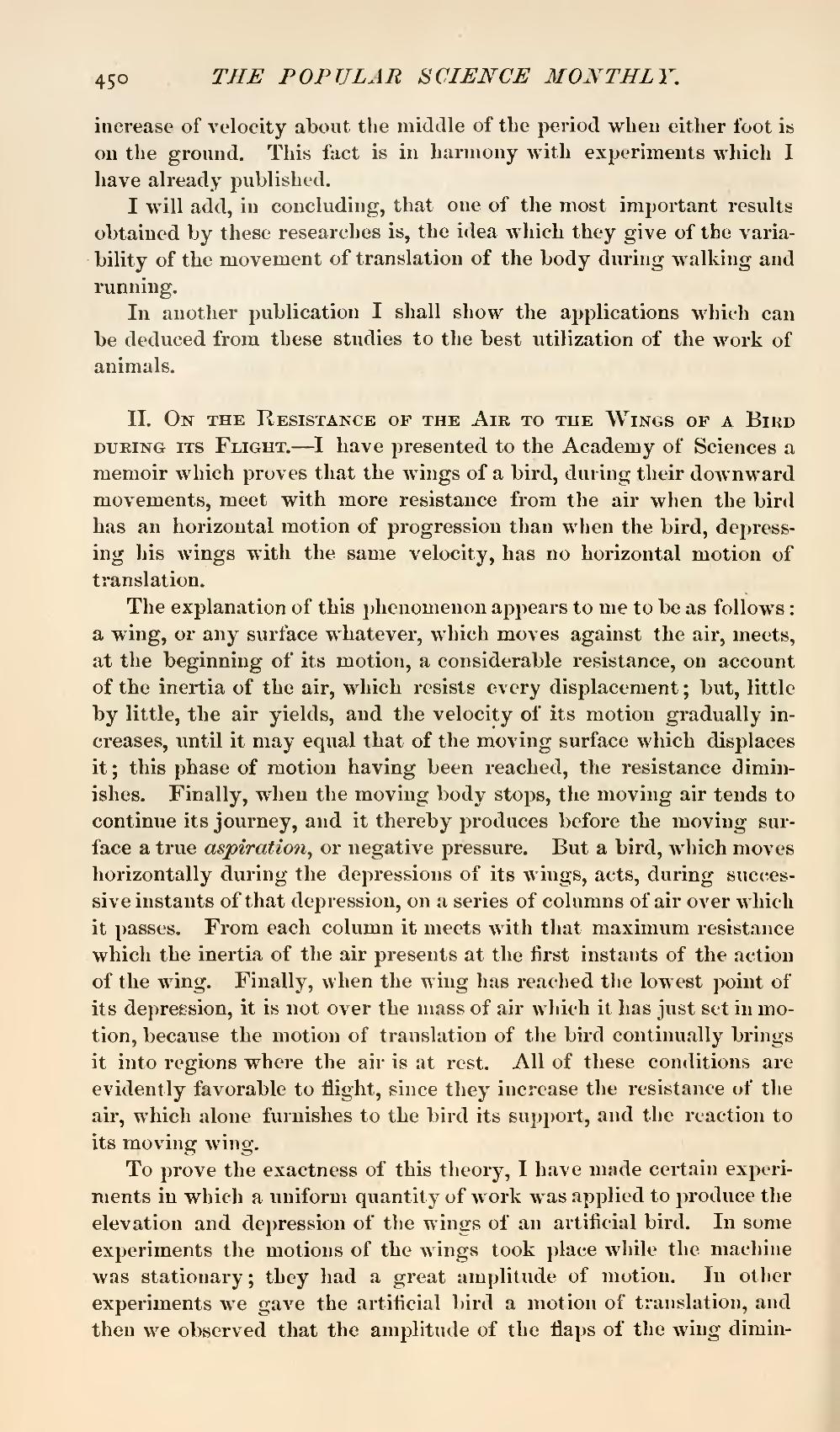increase of velocity about the middle of the period when either foot is on the ground. This fact is in harmony with experiments which I have already published.
I will add, in concluding, that one of the most important results obtained by these researches is, the idea which they give of the variability of the movement of translation of the body during walking and running.
In another publication I shall show the applications which can be deduced from these studies to the best utilization of the work of animals.
II. On the Resistance of the Air to the Wings of a Bird during its Flight.—I have presented to the Academy of Sciences a memoir which proves that the wings of a bird, during their downward movements, meet with more resistance from the air when the bird has an horizontal motion of progression than when the bird, depressing his wings with the same velocity, has no horizontal motion of translation.
The explanation of this phenomenon appears to me to be as follows: a wing, or any surface whatever, which moves against the air, meets, at the beginning of its motion, a considerable resistance, on account of the inertia of the air, which resists every displacement; but, little by little, the air yields, and the velocity of its motion gradually increases, until it may equal that of the moving surface which displaces it; this phase of motion having been reached, the resistance diminishes. Finally, when the moving body stops, the moving air tends to continue its journey, and it thereby produces before the moving surface a true aspiration, or negative pressure. But a bird, which moves horizontally during the depressions of its wings, acts, during successive instants of that depression, on a series of columns of air over which it passes. From each column it meets with that maximum resistance which the inertia of the air presents at the first instants of the action of the wing. Finally, when the wing has reached the lowest point of its depression, it is not over the mass of air which it has just set in motion, because the motion of translation of the bird continually brings it into regions where the air is at rest. All of these conditions are evidently favorable to flight, since they increase the resistance of the air, which alone furnishes to the bird its support, and the reaction to its moving wing.
To prove the exactness of this theory, I have made certain experiments in which a uniform quantity of work was applied to produce the elevation and depression of the wings of an artificial bird. In some experiments the motions of the wings took place while the machine was stationary; they had a great amplitude of motion. In other experiments we gave the artificial bird a motion of translation, and then we observed that the amplitude of the flaps of the wing dimin-
